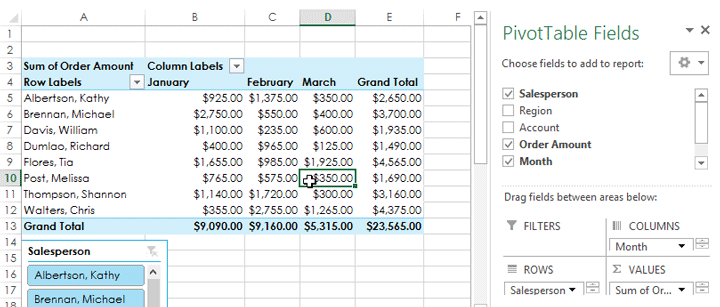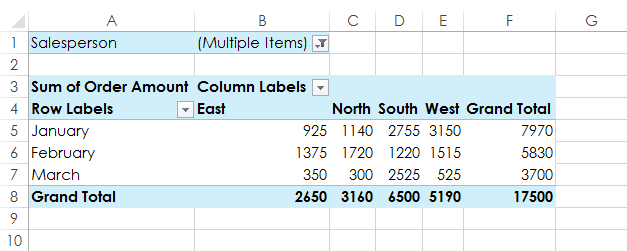

Existing Worksheet - Your PivotTable can either be placed on the same worksheet as the source data or on a new tab within the same workbook. Make sure that the header row is included. Table/Range: field - Excel will usually select the range that contains the data to be summarized, but it doesn’t hurt to double-check.Click the PivotTable command.Ĭlick any cell within your source data, click the Insert tab on the Excel ribbon, and click PivotTable. In our case, some of our account holders have no phone numbers or no email addresses, but we have no rows that are completely empty. You’ll also want to look out for numbers incorrectly formatted as text. When values are mistakenly duplicated, we may end up with incorrect results. When entire rows are blank, this suggests to Excel that we have reached the end of the data set. Good data is data with proper headers, consistent data types, accurate information, and no blank rows or unwanted duplicates. To illustrate how quickly and powerfully pivot tables can provide insight into large data sets from different angles, let’s use the following list of account subscribers to create your first pivot table. In fact, in 5 simple steps, you can make a pivot table of your own. Pivot tables can handle complex data, but creating one doesn’t have to be complicated.

Mastering pivot tables will reduce the time spent poring over worksheets, so you’ll have more time to actually take action on the data you're analyzing.


 0 kommentar(er)
0 kommentar(er)
